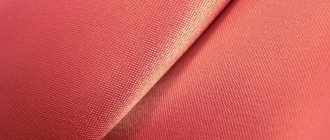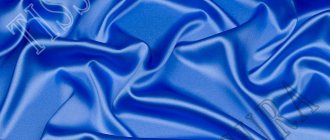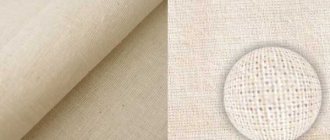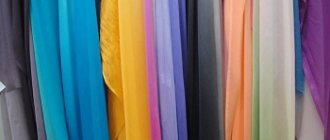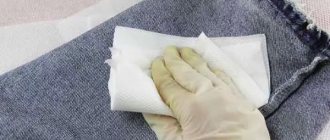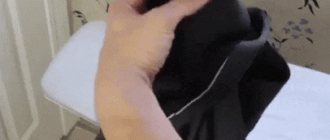History of silk
Legend. The history of silk is shrouded in various legends.
The Chinese were the first to produce and use natural silk 5–8 thousand years ago. According to one Chinese legend, it was in 2640 BC during the reign of Emperor Huang Di (also called the Yellow Emperor). One day, when Emperor Lei Zu's wife was drinking tea in the shade of a mulberry tree, a cocoon fell into a cup of hot tea and turned into an amazing shining thread, which Hsi Ling Shi liked so much that she ordered the servants to unwind it from the cocoon and weave fabric from it. This is how the history of silk began. "Silk Road". At first, silk was used only for imperial robes, but gradually silk fabrics spread to various regions of Asia. In subsequent centuries, the silk trade reached the Indian Peninsula, the Middle East, Europe and North Africa and acquired such a scale that the main trade route between Europe and Asia began to be called the “Silk Road”. This was not one specific path - it was many roads that united the once opposite outskirts of Eurasia.
Secrets of silk production. To maintain the monopoly, the secret of silk production in China was strictly guarded.
Disclosure of this secret, smuggling of silkworm caterpillars or seeds of silk trees was punishable by death. But already in the second century BC. The Chinese brought these secrets to Korea, and later India learned the secret of silk production. Around the 5th century, silk began to be produced simultaneously in several countries. In the 18th century, silk was already produced in most countries of Western Europe. And yet, it is China, which has kept its secret of silk production for more than 3,000 years, that is considered the birthplace of this amazing fabric.
Features of care
Natural silk, like wool, is a natural protein that breaks down at high temperatures. Therefore, we wash it carefully, at 30 °C, best by hand, using special products or baby soap. No bleach! Do not rub too hard, do not twist.
If you decide to wash it in the machine, turn off the spin cycle and use the most delicate mode.
Products made from natural silk should only be dried in the shade and ironed from the inside out with a dry iron heated to a temperature not exceeding 150 °C.
If suddenly, due to repeated washings, the paints have become dull and the shine has disappeared, then rinsing in a weak solution of white vinegar (9%) will help - 1 tablespoon per 1 liter of water.
Silk is very sensitive to the contact of perfume, alcohol, all kinds of fragrances, aerosols and other chemicals, and it is also not advisable to sweat in silk clothes.
Silk production
Silk is a natural elastic fiber obtained from the threads of silkworms. Silk is produced by the larvae of most insects, but such silk is not used commercially. True, silk produced by arachnids is used in the production of optics for weapons and telescopes, but this is an exception.
People have long used the ability of silkworm caterpillars to produce silk threads. The industrial production of silk—the rearing of the mulberry caterpillar—is called sericultivation (sericum in Latin means silk cultivation). The silk industry uses silk produced by the silkworm caterpillar Bombyx mori and silkworm caterpillars of the same species. Bombyx mori is a butterfly common mainly in China, whose caterpillars feed mainly on the leaves of silk (mulberry) trees. [Silkworms are butterflies, but they are often colloquially referred to as caterpillars that produce silk threads.]
Growing eggs. Mating of silkworms lasts 6–8 hours. After a few days, the female lays 300–400 eggs and then dies. Each testicle is oval-shaped, flattened, 1–1.5 mm long. The eggs are carefully sorted, and after 10 days of accelerated incubation, they hatch into caterpillars about 0.6 cm long.
Feeding. The caterpillars are placed on gauze and fed generously with mulberry leaves, occasionally adding leaves of orange trees or lettuce. The highest quality silk is produced by caterpillars that are fed only with the leaves of mulberry trees. During this time, the silkworm caterpillar molts four times. After 4-6 weeks it reaches its maximum size - about 7.5 cm, stops feeding, changes color and is ready to spin a cocoon.
Weaving. At this stage, the caterpillars are separated and placed in separate wooden enclosures. Within two days, protein threads that quickly solidify in the air are released from the glands of the silkworm, bound by the protein sericin, secreted by other glands. Over the course of four days, the caterpillar rolls the threads into a cocoon with characteristic movements of its head. The completed cocoon is a thread up to 3000 meters long. The cocoon has the shape of an elongated oval, and depending on the type of caterpillar in each country, the color of the cocoon is different: in China it is yellow, in Japan it is greenish, and in other species it is white. In nature, butterflies would hatch from the cocoon after 12–16 days, but then they would spoil the integrity of the silk thread. Therefore, most silkworms (some of them are left for reproduction) are destroyed using hot water or hot air.
Winding up threads. The cocoon is treated with hot air, steam or boiling water. Temperature weakens the binding effect of sericin, and then silk threads are carefully spun from 4–8 cocoons. Silk raw materials still contain quite a lot of sericin; It is also preserved in silk fabric, but after washing in hot water and soap, sericin decomposes and the fabric becomes soft, shiny and 30 percent lighter. It takes about 2,500 cocoons to produce five hundred grams of silk.
Type of silk. Silkworms are raised for silk production in China, Japan, India and Southern Europe.
By crossing, threads of four different colors (gold or other shades) are obtained. Silk raw materials are spun into threads suitable for both weaving and knitting. Depending on the method of twisting, four main types of silk threads are obtained, from which various silk fabrics can later be woven or knitted.
How do caterpillars produce silk thread?
We have already figured out what silk is made from, but how does it happen? How does the caterpillar produce such precious thread? The fact is that the hatched creatures spend 24 hours eating the leaves of the mulberry tree on which they live. In two weeks of life, they grow 70 times and molt several times. Having fed on the mass, the silkworms are ready to produce thread. The body becomes translucent, and the caterpillars crawl in search of a place to produce thread. At this point, they need to be placed in special boxes with cells. There, silkworms begin an important process - they weave cocoons.
Digested leaves turn into fibroin, which accumulates in the glands of the caterpillar. Over time, the protein turns into a substance called sericin. In the mouth of the creatures there is a spinning organ; at the exit from it, two strands of fibroin are glued together with the help of sericin. The result is one strong silk thread that freezes in air.
One caterpillar can spin a thread more than a thousand kilometers long in two days. To produce one silk scarf, more than a hundred cocoons are required, and for a traditional kimono - 9 thousand!
Types of silk
Here are some popular types of silk fabrics of various weaves:
- Toile. For this type of natural silk fabric, plain weave is used. It has a soft shine, good density, and also holds its shape well. Suitable for ties, dresses, linings.
- Atlas. This is a silk or semi-silk fabric with a satin weave. It is distinguished by density, smoothness and shine of the front side, softness, and drapes well. Used for sewing various clothes and shoes, upholstery.
- Satin. This is a fabric of satin weave, often made from cotton or chemical fiber, as well as silk. It is distinguished by smoothness, silkiness of the front surface, density, and shine. Dresses, men's shirts, etc. are made from it.
- Crepe. This is a group of silk, semi-silk, wool, artificial and synthetic fabrics, which is made from threads with high twist (crepe). It includes: crepe satin, crepe chiffon, crepe de Chine, crepe georgette. It is distinguished by its roughness, slight shine, good drape, and also wrinkles slightly. Used for sewing dresses and suits.
- Chiffon. Silk or cotton fabric, plain weave. It is soft, thin, matte, rough, and drapes well.
- Organza. Fabric made of silk, polyester or viscose. It is distinguished by its rigidity, thinness, and transparency.
- Gas. The fabric has a special gas weave. It is distinguished by its lightness, transparency, tenderness, holds its shape well, without shine. They are used mainly for decoration, often for wedding dresses.
- Wild silk. This is a textured fabric, soft, with a muted shine.
- Silk DuPont. Very dense, not soft, but not too hard fabric, with a soft shine. Used for sewing curtains.
- Taffeta. This is silk or cotton fabric. It is characterized by plasticity and rigidity. It is used to make curtains, outerwear, and evening dresses.
Useful properties of silk thread
Silkworm saliva contains sericin, a substance that protects silk from pests such as moths and mites. The caterpillar secretes matting substances of sheer origin (silk glue) from which it weaves a silk thread. Despite the fact that most of this substance is lost during the production of silk fabric, even the little that remains in the silk fibers can protect the fabric from the appearance of dust mites.
Thanks to serecin, silk has hypoallergenic properties. Due to its elasticity and incredible strength, silk thread is used in surgery for suturing. Silk is used in aviation; parachutes and balloon shells are sewn from silk fabric.
Benefits of silk
Silk has been revered and mystified since ancient times. Even the Roman philosopher and moralist Pliny the Younger argued in the 1st century that Roman women loved silk too much and this negatively affected the financial system of the entire Roman Empire.
Silk is distinguished by a combination of certain qualities that make it unique and exceptional among other fibers.
- Shine. The particularly smooth surface of silk threads reflects light, so silk fabrics have a shine that no other fabric made from natural fiber has.
- Strength. Silk is the strongest of all natural fibers. Only nylon can be compared to it, but it is synthetic.
- Colorfulness. Silk is very easy to dye, so it can have colors and shades of varying intensities. The colors of the design are absorbed so well that both sides of the fabric are approximately the same.
- Fortress. Silk is stronger than cotton, but inferior to linen and raw wool. Silk thread is resistant to fungus and mold that destroy natural fiber.
- Elasticity. The silk thread can be stretched up to 20 percent without disturbing its structure, and if it is released, it returns to its original length.
- Breathability. Silk “breathes” - its threads are sparse, which allows the skin to breathe. Silk absorbs moisture from the skin very well, while remaining dry, so we feel comfortable in silk clothes.
- Warm. Unlike coarse and heavier wool, silk is not only warm, but also delicate and light.
How to distinguish natural silk from fake
An experienced buyer can easily distinguish natural silk fabric from artificial one. For beginners, there are several ways to accurately identify real silk fabric:
- Natural silk material has a natural, subdued shine. Under different lighting, it changes shade and shimmers. Artificial silk has a dull shine and does not change shade.
- Upon contact with the body, natural silk instantly acquires body temperature.
- Natural silk has a pleasant tactile sensation. It is soft, gentle, and floats easily in your hands, as if flowing down. Artificial is colder and harsher.
- Absorbs water well.
- When crumpled, the material gradually straightens out, leaving no creases.
Basic rules for caring for silk
Silk is a 100% natural biofiber made of proteins. To preserve the unique properties, durability and exceptional beauty of natural fiber, it is necessary to follow the basic rules for caring for silk products (bed, clothes).
Do not bleach silk with chlorine or other bleaches - they will give the silk a yellowish tint and speed up its wear.
Some features of caring for silk products
For silk blankets and pillows:
- When using a silk duvet or pillow, always wear a duvet cover or pillowcase.
- Do not shake them vigorously as this may damage the integrity of the fibers inside the blanket.
- If necessary, silk blankets and pillows can be dry cleaned, but you should be aware that the chemicals used can cause the silk threads to harden and then your blanket or pillow will lose its fluffiness. Remember that chemical residues can not only damage silk, but also cause an allergic reaction. To maintain the anti-allergic properties of silk, it is important to ensure that there are no chemical residues in the silk fiber after cleaning.
- Do not wash blankets and pillows in the washing machine or by hand, or tumble dry.
- The traditional method of cleaning silk blankets and pillows is to air them on a sunny day in the shade 2-3 times a year.
- Clean stains with a damp white cloth or wash in 30 ºC water with the addition of natural detergents intended ONLY for silk. Dry the blanket spread out.
- Protect from moths.
Remember that after any cleaning or washing of silk blankets and pillows, the much-valued properties of natural silk gradually disappear.
Silk towels:
- Before using silk towels, we recommend washing them 3-4 times in the machine at 30ºC.
A way to determine the authenticity of natural silk
Separate a few threads from the material and set them on fire.
- Natural silk fiber burns slowly, without soot and without forming a molten ball at the end. The ash from combustion easily scatters. At the same time, the smell of burnt wool is felt.
- The synthetic material burns quickly, with soot, the thread melts to form a soft dark ball at the end of the thread, which quickly hardens when exposed to air. Smells like melted plastic.
- Viscose burns quickly with a papery smell, leaving behind crumbly ash. Viscose, like paper, is made from a single fiber – cellulose.
